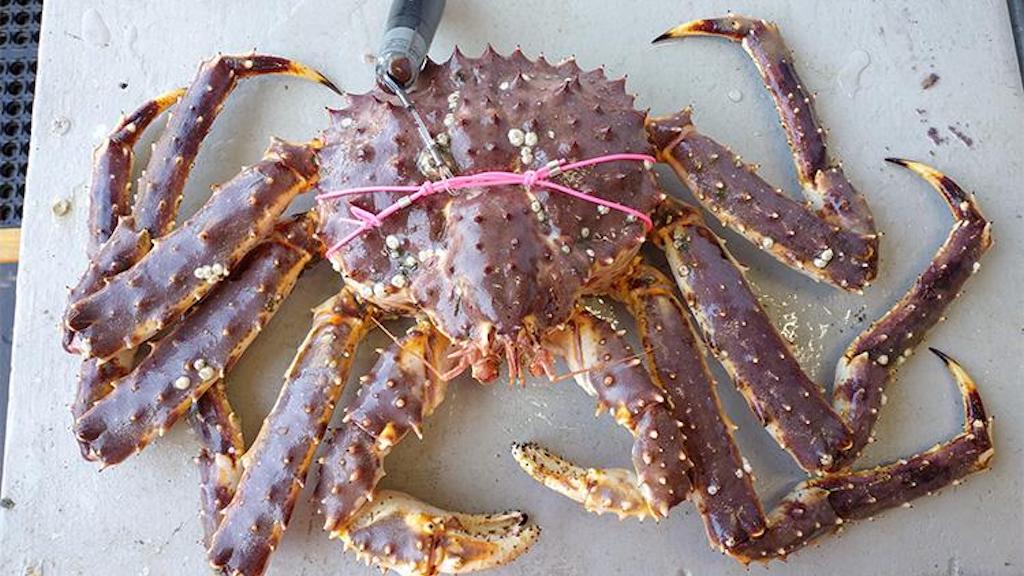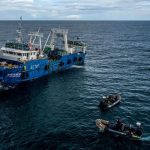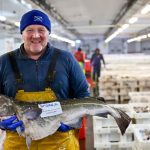This winter, crab fishermen are working together with scientists to meet the challenges of winter research into Bristol Bay red king crab.
The Bering Sea crab industry is partnering with NOAA Fisheries’ Alaska Fisheries Science Center and the Alaska Department of Fish and Game to meet a critical need for winter data on Bristol Bay red king crab. Scientists and fishermen are working on a month-long field research.
The research responds directly to data requests from the North Pacific Fishery Management Council to inform their management decisions.
‘It’s an exciting chance to study this stock in winter,’ said study lead Mike Litzow, Alaska Fisheries Science Center.

‘That’s when people really interact with the stock – the Bristol Bay red king crab fishery and many other fisheries that potentially interact with crab take place in fall and winter. But because of the difficulty of working in the Bering Sea in winter, we don’t have great data then. This is a great opportunity to fill that data gap.’
Bristol Bay red king crab is the largest US stock and has been among the most valuable US fisheries. But this stock has gradually diminished over the past fifteen years. The decline is part of a broader trend in red king crab populations across Alaska. Driven by failure of the stock to produce enough young, the reason remains unknown. Reduced numbers of female Bristol Bay red king crab led to closure of the fishery under State of Alaska harvest control rules in 2021 and 2022 for the first time since 1995.
With crabbers out of work, the industry proposed a unique research opportunity. Crabbers would work at sea with scientists, providing the capacity to accomplish winter research that would not otherwise be possible.
‘The Bering Sea crab industry is very encouraged to be working with NOAA Fisheries and Alaska Department of Fish and Game. The agencies hustled to get research going in short order to help address the dire situation the crab industry is currently in,’ said Scott Goodman, Executive Director, Bering Sea Fisheries Research Foundation.
‘Both agencies are funding the project to prioritize urgent research that will help by getting some crab vessels and crew out on the water immediately to collect timely, important information. The project is also tackling some important pot gear work to refine options that would keep unwanted small crab out of pots, as lowering fishing impacts is a high priority for crabbers.’

The cooperative provides a rapid research response to answer questions about winter distribution and movement. Late winter/spring is likely a vulnerable moulting and mating period during the life of Bristol Bay red king crab.
‘The North Pacific Fishery Management Council has been asking for better information on winter distributions,’ Mike Litzow said. ‘That’s the primary goal of this work.’
Two crab boats and crew will are working from Dutch Harbor to conduct a crab pot survey to map winter/spring Bristol Bay red king crab distributions in and outside of protected areas, to attach satellite tags to about 100 mature male red king crabs to track their movements and to test gear modifications and pot fishing methods to reduce discards by allowing non-legal crabs to exit pots. All crab are returned to sea alive after sampling.
The data collected will expand understanding of seasonal changes in crab distribution during potentially sensitive crab life-history periods. This information can be used to assess existing protection measures to bolster population recovery.
‘The research will provide information that could inform management decisions as early as this fall,’ Scott Goodman said. ‘Results from the gear work may also weigh into upcoming management decisions.’









